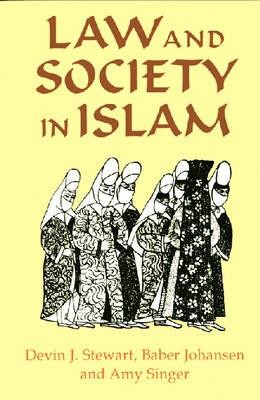
- We will send in 10–14 business days.
- Author: Devin J Stewart
- Publisher: Markus Wiener Publishers
- ISBN-10: 1558761233
- ISBN-13: 9781558761230
- Format: 15.2 x 22.9 x 1 cm, minkšti viršeliai
- Language: English
- SAVE -10% with code: EXTRA
Reviews
Description
This book covers significant themes explaining the practice of Islamic law.
The first essay treats taqiyyah (literally, "caution"), the concealment of one's religion when to reveal it would incur danger, which is based on a Koranic passage. The author provides not only a legal and religious analysis of taqiyyah, but also, through the detailed examination of a prominent sixteenth-century Shiite scholar and cleric, reveals a complex pattern of behavior that allows Twelver Shi'is and other sectarian groups to reduce the risks entailed by participation in societies dominated by a Sunni majority.
The second essay inquires into norms for physical and sexual contacts between individuals, even husbands and wives, defining rights to look, to touch, and even to mutilate.
The third essay evaluates the Ottoman records of local fines. This report on legal regulations and their execution as well as on practices of law and tradition in villages of Northern Palestine creates a colorful picture of life in the sixteenth century.
EXTRA 10 % discount with code: EXTRA
The promotion ends in 22d.23:22:36
The discount code is valid when purchasing from 10 €. Discounts do not stack.
- Author: Devin J Stewart
- Publisher: Markus Wiener Publishers
- ISBN-10: 1558761233
- ISBN-13: 9781558761230
- Format: 15.2 x 22.9 x 1 cm, minkšti viršeliai
- Language: English English
This book covers significant themes explaining the practice of Islamic law.
The first essay treats taqiyyah (literally, "caution"), the concealment of one's religion when to reveal it would incur danger, which is based on a Koranic passage. The author provides not only a legal and religious analysis of taqiyyah, but also, through the detailed examination of a prominent sixteenth-century Shiite scholar and cleric, reveals a complex pattern of behavior that allows Twelver Shi'is and other sectarian groups to reduce the risks entailed by participation in societies dominated by a Sunni majority.
The second essay inquires into norms for physical and sexual contacts between individuals, even husbands and wives, defining rights to look, to touch, and even to mutilate.
The third essay evaluates the Ottoman records of local fines. This report on legal regulations and their execution as well as on practices of law and tradition in villages of Northern Palestine creates a colorful picture of life in the sixteenth century.


Reviews